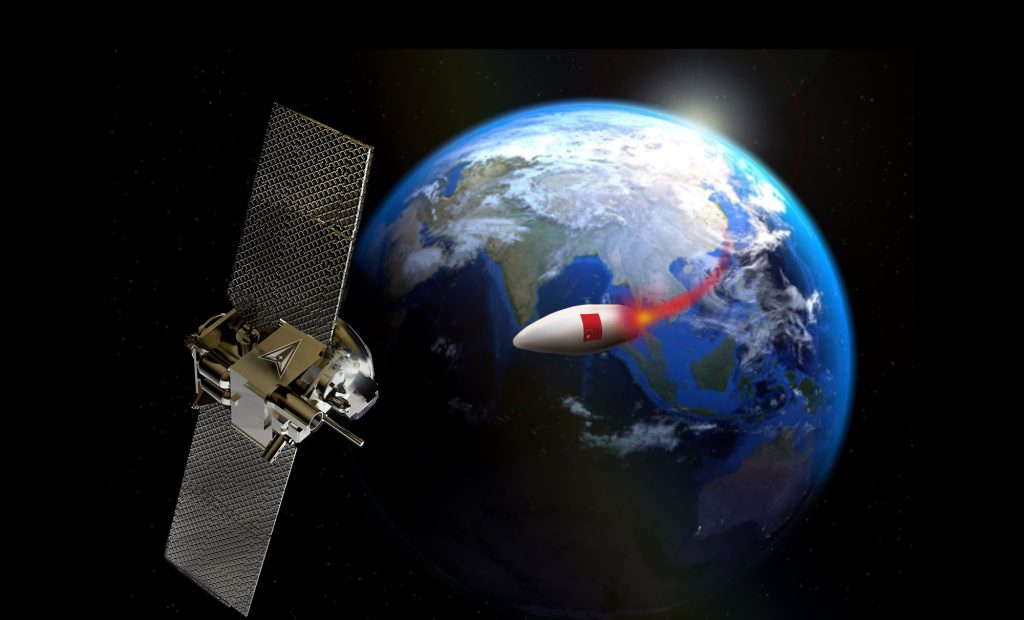
Whiting Calls for ‘Space Fires’ in Rare Hint About Offensive Weapons (Image Credit: airandspaceforces)
U.S. Space Command needs “space fires,” its commander said this week, the latest indication that the Pentagon is growing more comfortable talking about offensive weapons in space.
“We need space fires to enable us to establish space superiority,” said Gen. Stephen N. Whiting, speaking Aug. 6 at the Army Space and Missile Defense Symposium in Huntsville, Ala.
The term “fires” refers to “available weapons and other systems to create a specific lethal or nonlethal effect on a target” in joint doctrine. In space, that means weapons that could either destroy, deny, disrupt, deceive, or degrade adversaries’ satellites.
Whiting listed space fires as the top of his Integrated Priorities List, which SPACECOM submitted to the Pentagon to help frame requirements for the fiscal 2027 budget. The list summarizes the operational needs of his combatant command.
“The purpose of it is to inform the services and defense agencies of our warfighting needs as they prepare their budget and acquisition plans,” Whiting said, part of SPACECOM’s larger push to “pivot” and prepare for 2040.
“Integrated space fires” was also in the command’s fiscal 2026 list, submitted last year but only quietly disclosed in public. By speaking out, Whiting signaled that talking about offensive space weapons is no longer completely taboo.
Retired Air Force Col. Jennifer Reeves, a senior fellow at the Mitchell Institute for Aerospace Studies’ Space Center of Excellence (MISpaCE), said this should not be a surprise to anyone thinking seriously about modern warfare. “Fires happen in all warfighting domains, and space has been declared a warfighting domain,” Reeves said. “Yet there is this sort of moratorium still that we are not talking about offensive action in space. So in my opinion, [Whiting is] using very doctrinal terms to sort of broach a subject that is wildly uncomfortable.”
A few counterspace systems are already in the Pentagon’s arsenal, mostly jamming and other electronic warfare solutions that can limit space capability for a time in a given place, said retired Space Force Col. Charles Galbreath, another senior fellow at Mitchell’s Space Center.
“But that’s not what [Whiting is] talking about,” he added. “He’s talking about expanding the envelope of that capability set to address the no-kidding threats that are coming from adversaries’ use of space and adversaries’ growth of counterspace capabilities.”
Whiting added no detail on what kinds of space fires he wants. But the command’s continued push for more suggests that existing systems aren’t enough to counter growing capabilities and threats posed by China, Russia, and others.
Whiting has called China’s advances a “strategic breakout” in space, and Russia’s war in Ukraine, despite its expense, has not stopped Russian President Vladimir Putin from investing in counterspace weapons.
“Their aggressive actions in space directly threaten our systems,” Whiting said.

Those growing threats have also led Pentagon space leaders to talk more and more about the actions the U.S. must take to deter conflict in space. Chief of Space Operations Gen. B. Chance Saltzman made “responsible counterspace campaigning” a central tenet of his “Competitive Endurance” theory. And then-Maj. Gen. David N. Miller, director of operations, training, and force development for U.S. Space Command said in 2023 that the command needs to “demonstrate our capability to win.”
Part of that is having capabilities to provide “precision tracking, custody, and, if necessary, targeting information in order to disrupt space-enabled threats,” said Miller at the time, before moving on to become head of Space Operations Command, where he provides forces to Whiting.
On Aug. 6, Whiting listed “enhanced battlespace awareness for space operations” as another priority, specifically “in support of space fires.”
Galbreath said a range of new weapons are possible, both kinetic and non-kinetic. “There are different levels of capability that might be achievable even within kinetic,” he said. “It’s not necessarily ‘all kinetic is bad in space all the time.’ We’ve got to look at all these options. There are certainly some advantages to some non-kinetics. Jamming and lasers, you can get more shots per craft, plus it doesn’t potentially generate any form of debris, and it can also be reversible. So there are some definite advantages from an escalation perspective to non-kinetic, nonlethal forms of fire.”
But kinetic weapons may also have their place, he said. What Whiting did in raising the specter of space fires was to help spark a “long overdue” conversation, Galbreath and Reeves agreed.








